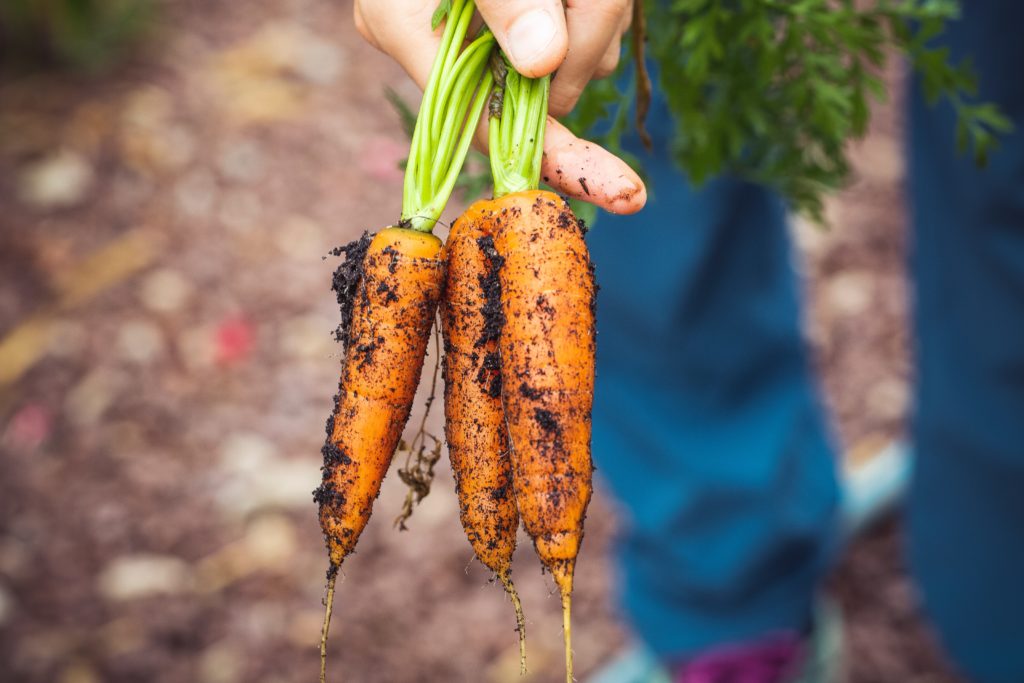All fields are required
Posted in Food Safety,Our Blog,Outbreaks & Recalls on June 22, 2020

With the current regulations set forward by many states during the COVID-19 pandemic many people are starting gardens at home to not only cure the boredom but also to provide nourishment for their families. This is whay today we are discussing Gardening & Food Safety!
Living in Virginia, I love that we typically have great planting weather and we can grow a variety of things in our own soil. We are usually able to start planting in mid-March and things will continue to grow through the first frost in the fall and sometimes even after.
I love that gardening gets me outside to enjoy the weather and I often tell people it is my therapy but of course there are precautions that we must take when doing something that many people love so much.
Farm to School gives us some great tips to expand our knowledge of gardening:
The fundamental principals of garden food safety are:
Ohioline gives some other great tips for making sure that your garden area and all aspects of gardening are as safe as possible.
Food safety risks can be reduced by selecting a location for your garden that is not in close proximity to a sewage system, animal-based compost piles or farm animals (i.e., hen house). Locations that are susceptible to flooding or exposure to agricultural run-off water should be avoided. Planting on level ground to prevent standing water is recommended. Have your soil tested for nutrients (macro and micro), pH and heavy metals such as cadmium, mercury and copper. This information is useful for choosing the best location for growing crops and for determining the use of soil amendments.
Composted or aged (also called stabilized) manure, or other soil amendments containing any animal components, such as manure, meat, egg shells or bones, are not recommended for gardens as they may not be thoroughly processed and thus contain foodborne pathogens. Compost prepared from grass clippings or plant trimmings, provided the plants are not diseased or infested with pests, are good alternatives to animal-based composts. The fact sheet “Composting at Home” (COM-0001-99) provides detailed information on how to prepare safe compost for the garden. If you choose to use animal-based compost in your garden, it should be commercially processed and applied well before (at least 90 days) you begin to harvest your crops. Compost should be stored away and downhill from your garden and should be enclosed and covered to prevent animals from digging in it. When handling compost wear protective gloves. Cloth or leather gloves should be washed immediately after handling animal-based compost.
City water, which is treated to meet state and federal drinking water standards (potable water), is recommended to irrigate, prepare fertilizer or pesticides, and wash your fruits and vegetables. If your water is from a well, ensure that the well is properly maintained and the water is tested on a regular basis. Refer to the fact sheet “Where to Have Your Water Tested” (AEX-315) for a list of water testing laboratories in Ohio. Well water must also meet drinking water standards.
Collecting rainwater is a great way to conserve water but it can contain pathogens and harmful metals from the roof or gutters. Treating rainwater (e.g., filtration and chlorination) before applying it to the garden is recommended. Other water sources, such as surface water from rivers, ponds or ditches, are not recommended. Surface water can contain high levels of pathogens and should be avoided.
Domestic pets, stray animals and wildlife droppings carry a number of foodborne pathogens and are a source of produce contamination. Although challenging, restricting animals like raccoons, rabbits, rodents, birds and chipmunks from entering the garden is recommended. Weeding the garden regularly and removing dead plants or fallen fruit will deter small animals from nesting or searching for food in the garden. Fences will keep large animals like deer away. Birds can be deterred with noisemakers or predator decoys. Stringing fishing line over the garden will also help to keep birds from landing in the garden.
Pathogens can end up on fresh produce through cross-contamination from dirty surfaces. Harvesting tools such as clippers or scissors and containers used to hold produce (i.e., pails, bowls, colanders) should be cleaned and sanitized before each use. Plastic bags can be used to collect fruits and vegetables but should not be reused. Avoid placing harvested produce directly on the ground. Surfaces can be cleaned with soap and water and sanitized with a dilute solution of bleach (1 Tablespoon per gallon of water). Remember to always use potable water to wash surfaces or mix sanitizers.
Handwashing is a simple and effective way to prevent foodborne illnesses. Wash your hands for at least 30 seconds with soap and potable water and dry them thoroughly with a disposable towel. Hand sanitizers can be used if soap and water are not readily available. However, hand sanitizers will not eliminate all types of pathogens present on your hands and are especially ineffective if your hands are visibly dirty. Always wash your hands before entering the garden or harvesting; after handling compost, plant debris or garbage; after touching a pet or farm animal; and after using the toilet.
As with any new adventures it is always best to learn as much as possible before jumping in with both feet. The more you know the better. Here’s to a bountiful harvest this year and in the years to come!
By: Samatha Cooper